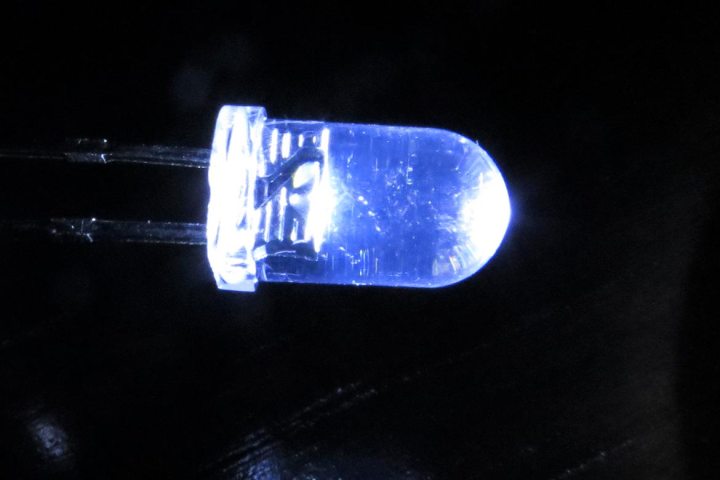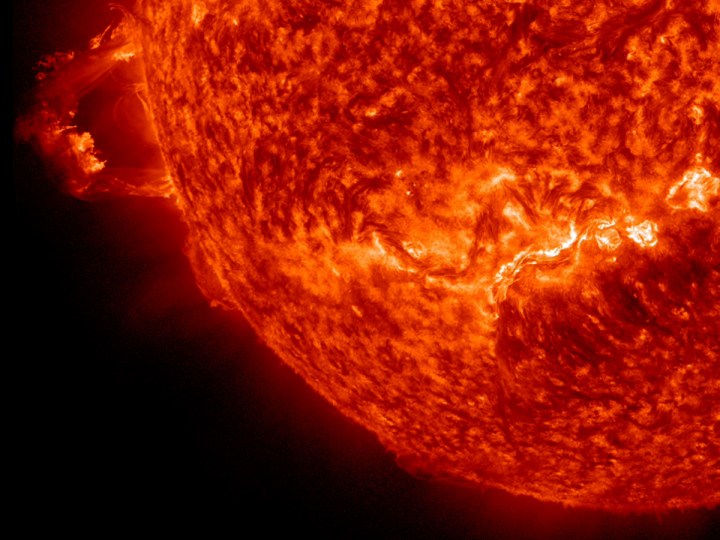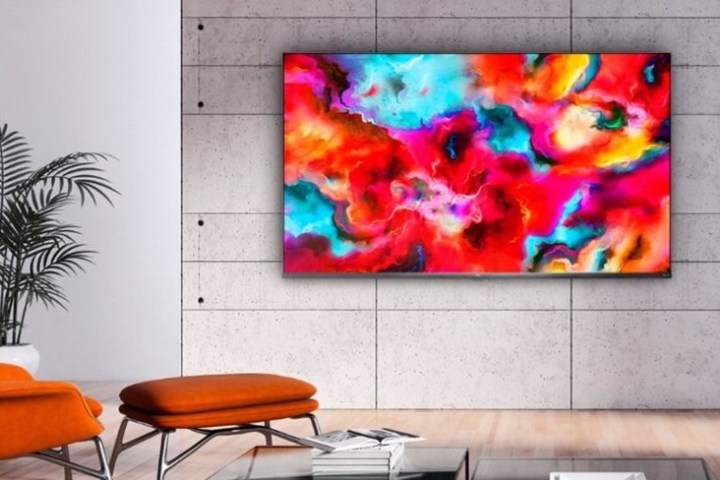Mini-LED and QLED are two TV tech acronyms that have more in common than one might expect. They’re technically both types of LED lighting, but the former is one type of LED lighting, while the latter is what you get when you combine the TV’s LED backlighting with a layer of quantum (that’s where the “Q” comes from) dots. If we’re starting to confuse you, our sincere apologies, but do bear with us.
Let’s take a closer look at both mini-LED and QLED tech, starting with the most important element: the LEDs.

LEDs: consider the size
There are two primary kinds of TV displays at the moment: Self-emissive displays like OLED and microLED — in which each individual pixel pumps out its own light and color — and backlit displays like LED and QLED TVs, which require a separate backlight to provide a light source, while an LCD matrix and color filters take care of color and controlling how much brightness comes through.
LED TVs and QLED TVs (which are essentially a subset of LED TVs) use LEDs as their backlights. However, not all TVs using this technology are created equal. Inexpensive LED TVs may use only a few LEDs arranged around the outside edges — thus the term “edge-lit” TVs — while the most expensive sets use hundreds of LEDs arranged in a grid-like pattern, sub-divided into individually controlled zones. These are known as full-array local dimming (or FALD for short). The general rule here is that the more LEDs you can pack into a backlight, the brighter it will get and the more control you’ll have over that brightness in very specific areas of the TV’s image.
In a perfect world, you’d have one LED for every pixel in an LCD matrix, but right now, that’s impossible. There’s a physical limit to the number of regular LEDs you can squeeze into a given space, which is determined by the size of the LEDs themselves. The bigger they are, the fewer you can use.
Mini-LED: a big leap in getting small
This size-based constraint on the number of possible LEDs is what makes mini-LED technology so exciting. It breaks through the previous size barrier by introducing LEDs that are much smaller than any that have been used so far. We’re talking about being able to fit thousands of LEDs in a space that once could support only hundreds.
A 4K TV has just over 8 million pixels, so mini-LEDs are still significantly bigger than an individual pixel, but that’s OK: Mini-LEDs are so much smaller than standard LEDs that you can still see a big difference.
It’s all about the light (and the dark)

As we said earlier, more LEDs lead to better brightness — beneficial for HDR as well as making the picture visible in bright rooms — but it also leads to better darkness, too.
To achieve a deep, dark black in a specific portion of the screen on a backlit TV — the kind you expect when looking at space scenes — you need to shut off the backlight in that portion entirely. But even with FALD, if there’s a big difference between the brightest part of the screen and the darkest, it can lead to blooming — an effect that makes it look like light is leaking from the bright portion into the darker portion.
With mini-LEDs, local dimming becomes far more effective because it increases the number of dimmable zones while decreasing their size, making it easier to isolate dark areas from light ones. This not only makes the darker portions of the screen darker, but the contrast created makes the lighter portions seem even brighter.
So far, we haven’t seen a mini-LED TV that gets as perfectly black (and without any blooming) as OLED, but that gap between backlit TVs and emissive displays such as OLED TVs is smaller than it has ever been.
Where does QLED fit into all of this?

QLED, or quantum dot LED, uses nano-particles that have a special property: When light shines on them, they can emit their own light, specifically tuned to a certain color. When red and green quantum dots are layered on top of a blue LED backlight, it creates a much fuller-spectrum white light than can be achieved using white LEDs. This pure white light, in turn, helps the TV’s color filter perform more efficiently and accurately. Top-of-the-line QLED TVs can offer image quality that comes very close to OLED. Their brightness and vivid colors can be bolder than OLED, but they still can’t match OLED’s perfect blacks.
That is until the introduction of QD-OLED technology. Combining the best of both QLED and OLED displays, these cutting-edge sets are currently produced by Samsung and Sony, and they’re pretty incredible. These TVs are equipped with ultra-powerful LED backlighting and quantum dots, which work in unison to enhance how much light is emitted by the OLED screen’s self-emissive pixels.
The end result is bright and vibrant with cinematic colors, contrast, and inky black levels. We’re big fans of the Samsung S95C, our favorite QD-OLED of 2023, and as time goes on, we’re betting we’ll see this kind of picture tech used by numerous other brands.
Are there any other benefits to mini-LED?
Mini-LED TVs are, in every other respect, the same as standard QLED TVs, so the same benefits apply to both: Screen sizes can be bigger, and prices can be lower than OLED TVs (for now, anyway). As the technology matures, we can expect to see mini-LED play a big role in improving image quality while driving down the price of both LED and QLED TVs. There will also be gains in power efficiency, as a large group of smaller LEDs can achieve the same brightness as larger LEDs, yet they need less energy to do so. Since OLED TVs have traditionally used less power than QLED TVs, this is yet another way that mini-LEDs help QLED TVs whittle away at OLED’s advantages.
Who makes mini-LED TVs?

TCL started the mini-LED TV movement when it released the first mini-LED TV — the 8-Series Roku TV — in 2019. Since then, TCL has released several mini-LED powered sets, with the 2023 TCL QM8 being one of the company’s latest and greatest.
You can also find mini-LED TVs from brands like Samsung (the 2023 QN90C), Sony (the 2022 X95K), and Hisense (the 2023 U8H).
Editors' Recommendations
- Hisense’s answer to Samsung’s The Frame TV starts at $999
- Best 70-inch TV deals: Get a big screen for sports for $420
- Best 65-inch TV deals: Get a 65-inch 4K TV for under $400
- Best TCL TV deals: 4K TVs as low as $150
- Hisense’s achingly bright U9N ULED TV is a UX for the masses



